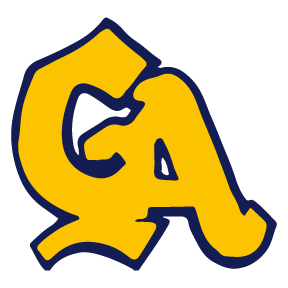Elementary
Grade 3
GREENCASTLE-ANTRIM
SCHOOL DISTRICT
PLANNED COURSE
Page _ of _
Department/Grade: 3rd Grade Course: Elementary Art Revision Date:
Required/Elective: Course Length: 45 minutes every 6 days Prerequisite: None for one school year
COURSE OBJECTIVES | Students will be able to:
| Resource Materials: | Slides Hand-outs/notes Drawings and examples by teacher Directions on board Posters Demonstrations Student generated information and examples |
|---|---|---|---|
CONTENT/TIMELINE OUTLINE | Drawing, painting-more techniques, clay/clay tools, mixed media, sculptures and/or bas-relief, printmaking, metal tooling, weaving (if time allows).
| Assessment: | Performance assessment
Project assessment - teacher and students discuss/view finished work. Outstanding projects chosen for display. |
Grade 4
GREENCASTLE-ANTRIM
SCHOOL DISTRICT
PLANNED COURSE
Page _ of _
Department/Grade: 4th Grade Course: Elementary Art Revision Date:
Required/Elective: Course Length: 45 minutes every 6 days Prerequisite: None for one school year
COURSE OBJECTIVES | Students will be able to:
Build on art vocabulary. Discuss artwork shown in slides and examples. Use creative problem-solving skills.
| Resource Materials: | Slides Hand-outs/notes Drawings and examples by teacher Directions on board Posters Demonstrations Student generated information and examples |
|---|---|---|---|
CONTENT/TIMELINE OUTLINE | Drawing, painting-more techniques, clay/clay tools, mixed media, sculptures and/or bas-relief, printmaking, foil (metal) tooling, weaving, and crafts.
| Assessment: | Performance assessment
Project assessment - teacher and students discuss/view finished work. Outstanding projects chosen for display. |
Grade 5
GREENCASTLE-ANTRIM
SCHOOL DISTRICT
PLANNED COURSE
Page _ of _
Department/Grade: 5th Grade Course: Elementary Art Revision Date:
Required/Elective: Course Length: 45 minutes every 6 days Prerequisite: None for one school year
COURSE OBJECTIVES | Students will be able to:
Discuss universal themes Compare and contrast various differences in artistic expression.
| Resource Materials: | Slides Hand-outs/notes Teacher gathered resource material Books, articles, library resources, Scholastic Arts magazine Drawings and examples by teacher Directions on board Posters Demonstrations Internet Artwork, craft, examples Student generated information and example |
|---|---|---|---|
CONTENT/TIMELINE OUTLINE |
Still life drawing Contour drawing Portraiture and the human figure Clay/sculpture Architectural design 3-D forms/shading Create realistic and abstract imagery Color theory/color mixing/tints/shade
| Assessment: | Group discussion/critiques Journals/Portfolio Student performance/teacher observation Student self evaluation written/oral Sketches/plans for ideas |
